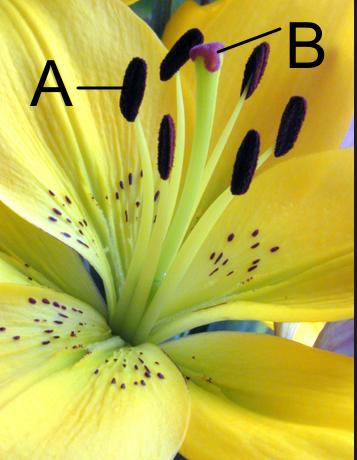 Topic 9: Plant biology
Topic 9: Plant biology
This is an introduction to the HL Plant biology topic. It lists understandings and skills expected for Topic 9 including structure and function of xylem and phloem, meristems, growth and reproduction. Helpful for revision.
Detailed revision notes, activities and questions can be found for each of the sub-topic pages:
- 9.1 Transport in the xylem of plants
- 9.2 Transport in the phloem of plants
- 9.3 Growth in plants
- 9.4 Reproduction in plants
9.1 Transport in xylem
Leaf stomata & transpiration
- Leaves are adapted to absorb carbon dioxide from the air
- therefore transpiration can also occur in leaves and water is lost to the air.
Vascular tissues
- The structure of primary xylem vessels.
- Xylem vessels transport water from roots to leaves to replace water lost in transpiration.
Transport in xylem
- The cohesive and adhesive properties of water molecules allow water transport under tension in xylem and cell walls.
- The roots cells use active transport for the uptake of mineral ions (nitrates) which causes osmosis and the absorption of water.
- Xerophytic plants in deserts have adaptations for water conservation.
Adaptations of xerophytes
- Xerophytic plants in deserts have adaptations for water conservation.
Skills
- Ability to draw the structure of primary xylem vessels in stems from microscope slides.
- Recognition of structure and function of xylem. (essential idea)
- Use potometers to measure transpiration rates
- Design an experiment to test hypotheses about the effects of abiotic factors on transpiration rates.
9.2 Transport in phloem
Phloem and translocation 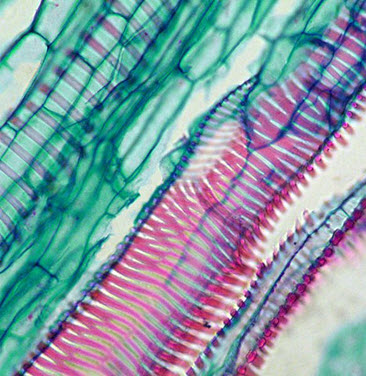
- Plants transport organic compounds (like sugars) from sources (leaves) to sinks (flowers, roots).
- Transport occurs along hydrostatic pressure gradients.
- Active transport causes high concentrations of solutes in the phloem sieve tubes at the source.
- This leads to water uptake by osmosis and raised hydrostatic pressure
- The result is that the phloem sieve tube contents flow away from the source.
Skills
- Identification of xylem and phloem in microscope images of stem and root.
- Ability to compare structure and function of phloem sieve tubes.
- Analysis of data from experiments measuring phloem transport rates using aphid stylets and radioactively-labelled carbon dioxide.
9.3 Growth in plants
Meristems and growth
- Plant meristems are undifferentiated cells which allow indeterminate growth (ie: plants continue to grow when adult.)
- Mitosis and cell division in the shoot apex provide cells needed for the stem to get longer and for the development of leaves.
Hormonal control of shoot growth 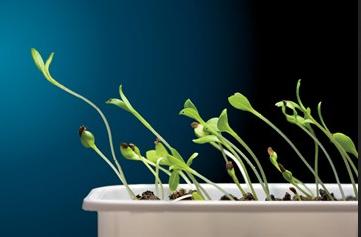
- Plant hormones (ie: auxin) control growth in the shoot apex.
- Auxin efflux pumps can create auxin concentration gradients
- Plant shoots respond to the environment by tropisms.
- Concentration gradients of auxin in plant tissue influence the rate of cell growth by changing the pattern of gene expression.
Skills
- Micropropagation of plants using tissue from the shoot apex grown on nutrient agar gels in the presence of growth hormones can be used for rapid production of new varieties, of virus-free strains of existing varieties and for propagation of orchids and other rare species.
9.4 Reproduction in plants
- Flowering involves a change in gene expression in the shoot apex which is a response to the length of light and dark periods in many plants
- Outline details of the processes of pollination, fertilisation and seed dispersal which are needed for success in plant reproduction.
- Most flowering plants use mutualistic relationships with pollinators in sexual
reproduction. - Methods used to induce short-day plants to flower out of season such as chrysanthemums, use long uninterrupted nights rather than short day
Skills
- Draw internal structure of seeds.
- Draw half-views of animal-pollinated flowers.
- Design of experiments to test hypotheses about factors affecting germination.
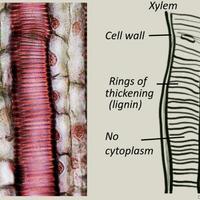
Transport in xylem 9.1 HL
This topic relies on a knowledge of the structure of the leaf, its air spaces and stomata. The transport of water through a plant is driven by transpiration in leaves. Water evaporates from the surfaces of cells and this water vapour fills the air spaces.
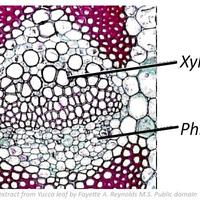
Transport in phloem 9.2 HL
This topic covers the structure of phloem and the way in which translocation takes place. This process links several topics including osmosis, cell structure, photosynthesis and respiration. There are some new terms like hydrostatic pressure, sinks and sou

Growth in plants 9.3 HL
This topic covers three aspects of growth in plants, phototropism, micropropagation and the indeterminate growth of plants. The role of hormones in organising growth of multicellular organisms is illustrated by auxin in phototropism, and then micropropagat
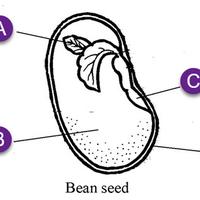
Reproduction in plants 9.4 HL
Flowers and pollination is explored quite simply. The parts of a flower, the processes of pollination and fertilisation as well as seed dispersal and germination are included. Mutualism between pollinators and flowers is covered as well as phytochromes.


 Twitter
Twitter  Facebook
Facebook  LinkedIn
LinkedIn